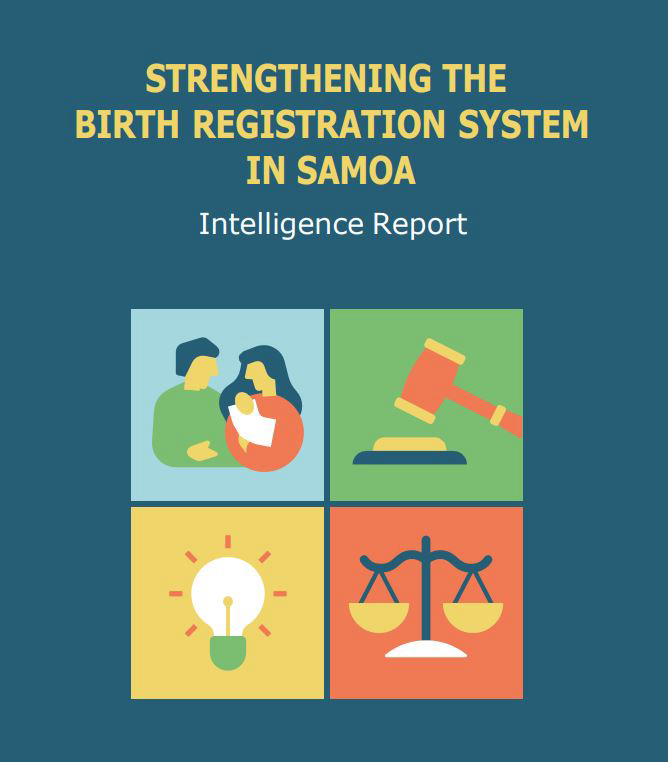Disclaimer:
Please be aware that the content herein has not been peer reviewed. It consists of personal reflections, insights, and learnings of the contributor(s). It may not be exhaustive, nor does it aim to be authoritative knowledge.
Title
Please provide a name for your action learning plan.
Digital Transformation of the CRVS system in Samoa - Learning loop 1
Challenge statement
Challenge type: If you are working on multiple challenges, please indicate if this is your "big bet" or "exploratory" challenge.
Please note: we ask you to only submit a maximum of 3 challenges - 1x Big Bet, 2x Exploratory. Each challenge must be submitted individually.
BIG BET
Challenge statement: What is your challenge? (Please answer in specific terms: "Our challenge is that...”.)
Our challenge is that how can we strengthen CRVS system in Samoa by leveraging technology and enhancing government coordination mechanisms through capacity building.
Background: What is the history of your challenge? What is causing or driving it? Who is involved? How does the current situation look like? What undesired effects does it produce?
In October 2021, the UNDP Samoa Accelerator Lab (AccLab) partnered with SBS to strengthen the birth registration system in Samoa through comprehensive in-depth understanding of the existing process and surfacing transformative actionable learning.
Major governance and institutional mechanisms issues were identified including, but not limited to, lack of inter-agency coordination, missed opportunities to use up-to-date technology, and unclear accountability framework for this work stream. In following the birth registration process, several supply-side factors were identified as barriers to timely birth registration including, (1) delayed notification of birth, (2) complex registration and verification process, (3) lack of awareness amongst main informants and stakeholders, (4) lack of easy access to registration services, (5) lack of control checks, (6) ineffective technology, (7) lack of integrated information system and interoperability of technology systems, (8) high number of backlogs of unregistered individuals, and (9) frequent service disruption. Similarly, demand-side factors hindering timely birth registration include (1) lack of public awareness and information, (2) sociocultural practices and norms, (3) lack of incentives, and (4) direct and indirect costs such as transportation and the fee to print and issue birth certificates.
These learnings were utilized for the current programme design and implementation. The CRVS steering committee has been revitalized and received capacity building training. This committee is tasked to bring much needed whole-of-government approach to the CRVS strengthening process, including increased coordination among different government ministries and harmonize CRVS related activities. Some members of the steering committee also benefitted from learning about CRVS system upgrade from New Zealand, enabling the committee members to plan out CRVS strengthening programme for Samoa.
A new, open-source CRVS solution prototype has been developed to address the challenges stemming from the use of obsolete and non-interoperable technology. The new CRVS system prototype will enable the government partner to test out a new software solution in a controlled setting and improvise the solution before scaling it at the national level.
An awareness campaign was also launched in Samoa. This campaign leveraged Samoan cultural event, White Sunday, a day to celebrate children, to an important messaging of timely birth registration.
Quantitative evidence: What (official) data sources do you have on this challenge that better exemplifies the importance and urgency of this frontier challenge? You can add text, a link, or a picture.
UNDP AccLab and Samoa bureau has jointly published an intelligence report
Strengthening the Birth Registration System in Samoa | United Nations Development Programme (undp.org)
Qualitative evidence: What weak signals have you recently spotted that characterizes its urgency? Please provide qualitative information that better exemplifies the importance and urgency of this frontier challenge. You can add text, a link, or a picture.
Ministry of Health in Samoa is upgrading its patient record systems including births and deaths. These are important component of CRVS system, but the MOH cannot make its system interoperable with the CRVS system as the current CRVS system does not have the technical capacity. Additionally, Samoa is invested in building the national digital ID system for which a robust CRVS system is a key foundation.
This is created a sense of urgency for the government partners to collaborate on developing an technologically advanced, secure and fit for use CRVS system for Samoa.
Value proposition: What added value or unique value proposition is your Accelerator Lab bringing to solving this challenge? Why is it your Lab that needs to work on this challenge and not other actors within UNDP, other stakeholders in the country respectively? Why is it worth investing resources to this challenge?
Bringing the design thinking, experimental and iterative approach to the design of an essential government system - CRVS.
Short “tweet” summary: We would like to tweet what you are working on, can you summarize your challenge in a maximum of 280 characters?
Samoa successfully tested its open-source, secure and interoperable CRVS system and is ready to scale nationally.
Partners
Who are your top 5 partners for this challenge? Please submit from MOST to LEAST important and state Name, Sector and a brief description of the (intended) collaboration.
Please state the name of the partner:
Samoa Bureau of statistics, Ministry of Health, Government of New Zealand (Department of Internal Affairs), UNICEF and Pacific Community (SPC)
What sector does our partner belong to?
Government (&related)
Please provide a brief description of the collaboration.
Samoa Bureau of statistics and Ministry of Health - co-creating and implementing partners; Government of New Zealand (Department of Internal Affairs), UNICEF and Pacific Community (SPC) - Knowledge partners
Is this a new and unusual partner for UNDP?
Yes
Learning questions
Learning question: What is your learning question for this challenge? What do you need to know or understand to work on your challenge statement?
Best practices in co-driving strategic innovations and digital transformation with multiple government ministries with citizen centric approaches.
To what stage(s) in the learning cycle does your learning question relate?
Test, Grow
Usage of methods: Relating to your choice above, how will you use your methods & tools for this learning question? What value do these add in answering your learning question?
Visual thinking & mapping
Existing data gaps: Relating to your choice above, what existing gaps in data or information do these new sources of data addressing? What value do these add in answering your learning question?
Since we are developing an open-source prototype, user reviews become quite critical. The technology for the government has to also follow the existing legislative frameworks.
Closing
Early leads to grow: Think about the possible grow phase for this challenge - who might benefit from your work on this challenge or who might be the champions in your country that you should inform or collaborate with early on to help you grow this challenge?
Currently the open-source CRVS prototype includes registration for just 3 vital events - births, deaths and marriages. The next phase would involve including 7 other vital events in the prototype and scaling the prototype at the national level.
END OF ACTION LEARNING PLAN: Thank you! The form saves automatically and your submission has been recorded. You may now exit this window.


 8Decent work and economic growth
8Decent work and economic growth

 16Peace, justice and strong institutions
16Peace, justice and strong institutions
Comments
Log in to add a comment or reply.